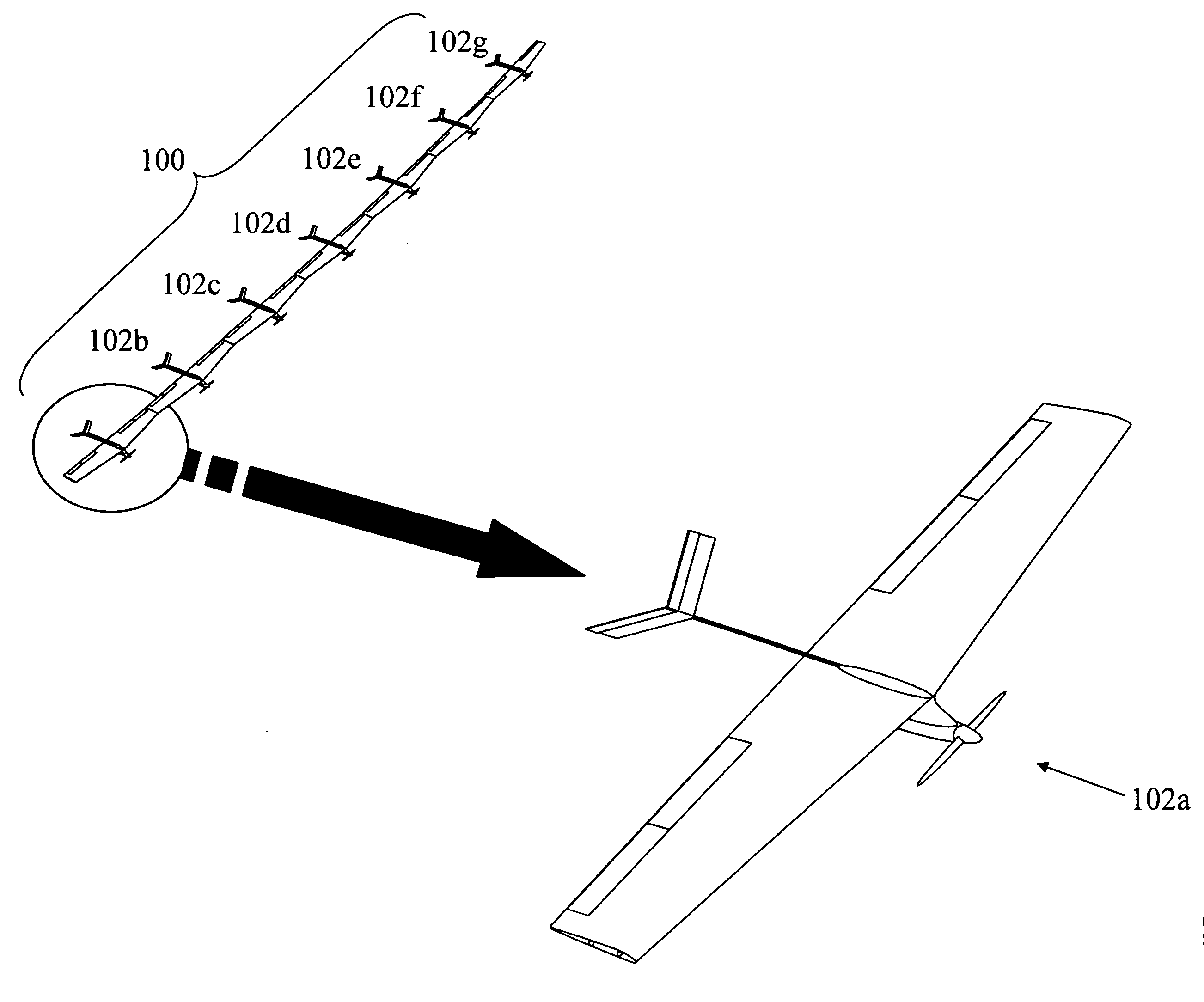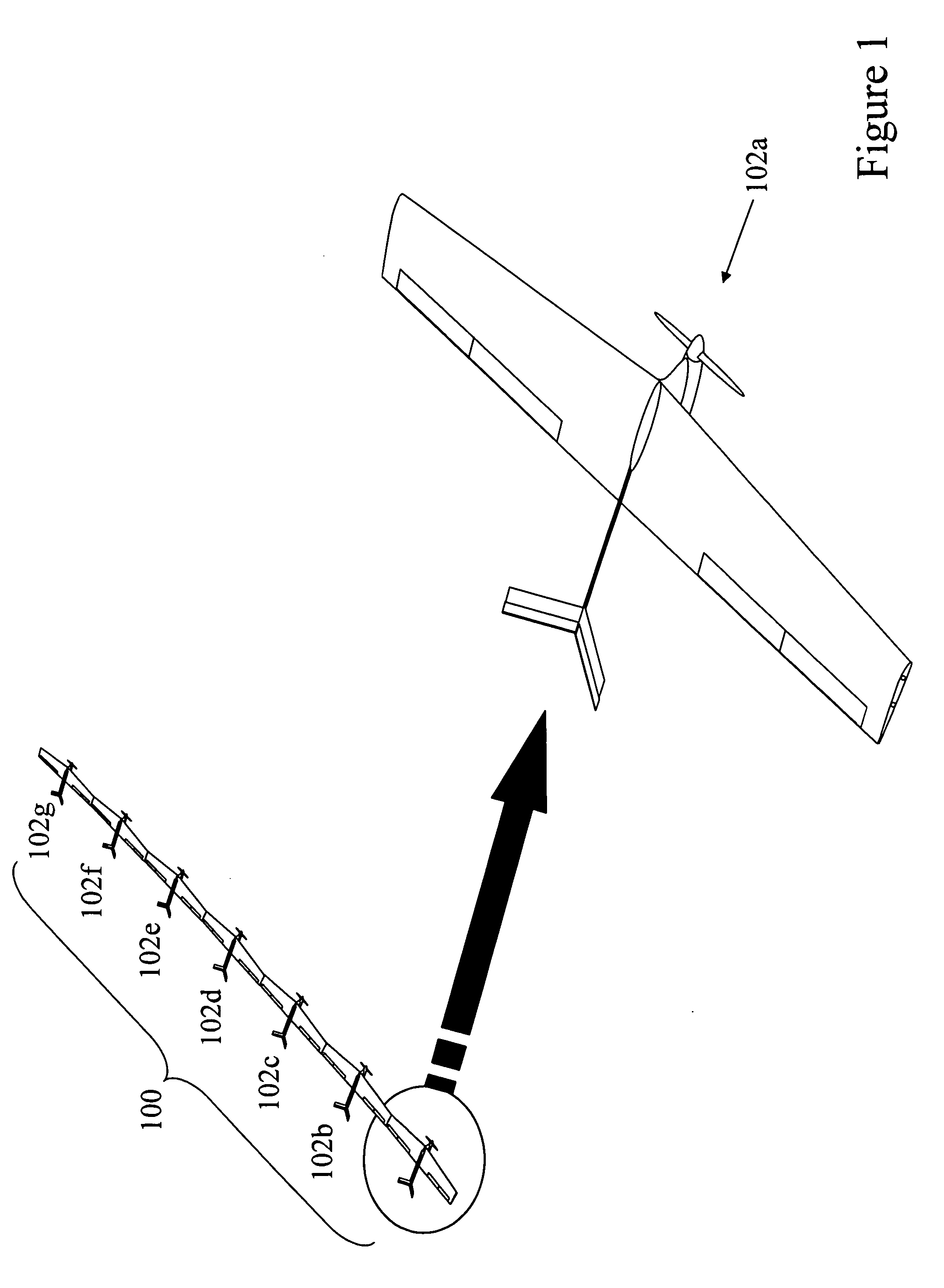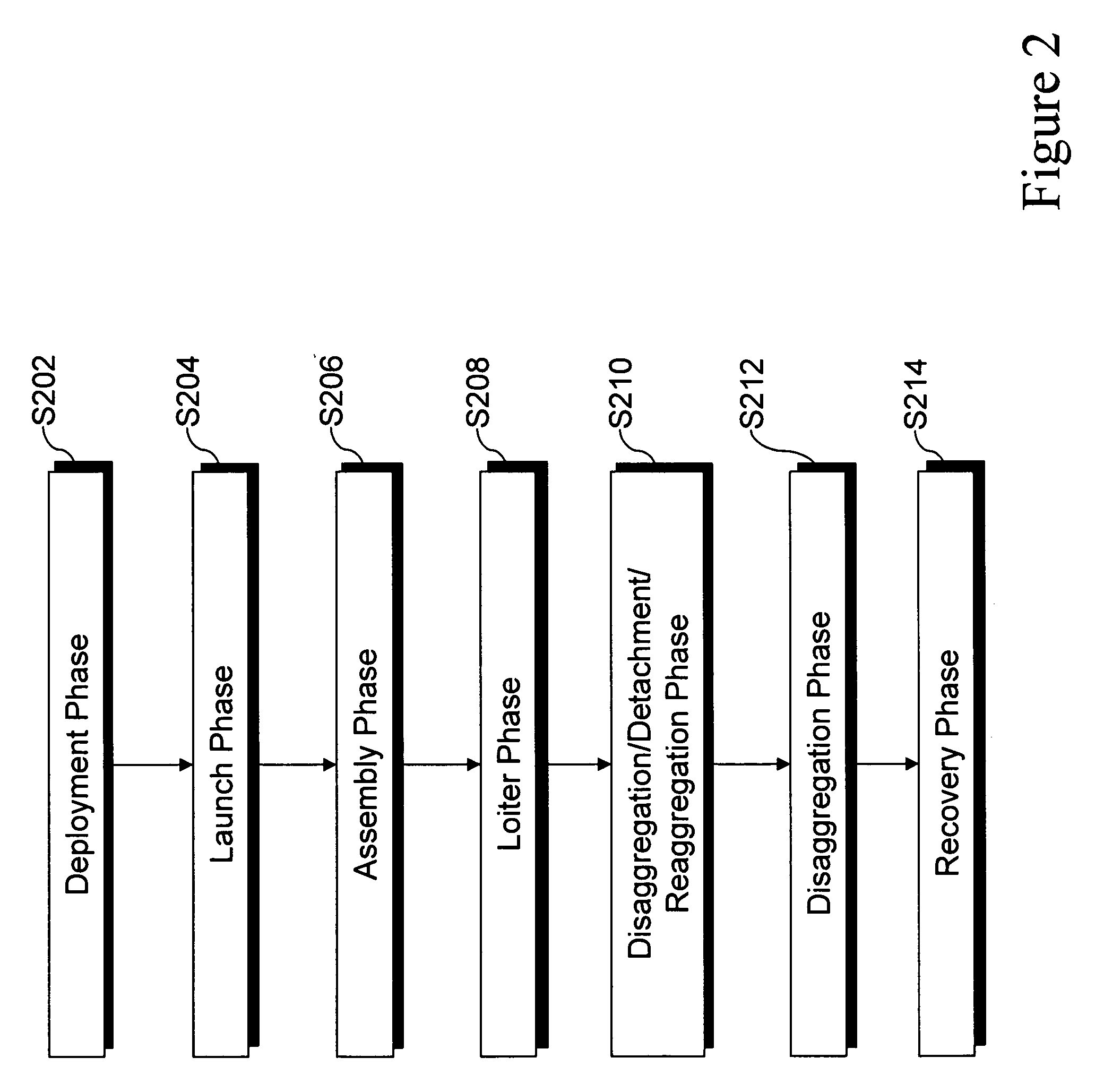Both of these alternatives have operational and cost disadvantages.
Satellites are expensive to launch and operate and, except in the case of geostationary satellites, cannot loiter over a point on the ground.
Geostationary satellites remain fixed with respect to a location on the ground only when launched into an orbital slot above the
equator, which drastically limits ground coverage, especially at high latitudes.
Finally, aircraft without long endurance at high altitudes have inefficiencies of operation, owing to the need to cycle such vehicles back and forth from a launch base to a mission
station (e.g. the locus of the surveillance, communication, or other mission activities in question).
The required fleet size, and thus the overall cost, increases with the distance of the mission station from the launch base.
Furthermore, along the entire flight path of the
cycling aircraft, the operation becomes subject to the vagaries of nature (e.g. storms) and, in the military case, enemy action, etc.
As a result of the cost and operational disadvantages of alternatives, a viable high altitude long endurance aircraft has become something of a holy grail for aircraft designers.
Satisfying these requirements with one design is an extremely difficult technical challenge.
For reasons of less-than-perfect subsystem reliability, no high altitude long endurance aircraft that could operate on-station indefinitely has heretofore been conceived.
Effectiveness is limited by very poor efficiencies when distance from the ground site becomes large, as a consequence of beam spreading and the resulting reduced
energy flux received by the aircraft.
Furthermore, if beam spreading is minimized by resorting to higher frequencies of energy transmission, flux is improved at the cost of increased
environmental risk (e.g. birds and other aircraft may fly through the beam at intermediate altitudes).
The practical result of these limitations is that the beam-powered aircraft is virtually tethered close to its source of power, which is operationally undesirable in most cases.
In both
airplane and airship cases, the combination of low power (which is due to the limits of solar flux) and high altitude results in the need for very large, lightweight structures.
Consequently, both airplanes and airships will be relatively fragile.
Additionally, airspeeds of both types of vehicle will be very low due to the low power that is available.
These aircraft are consequently at risk of catastrophic
structural failure or being blown uncontrollably downwind, as a result of gusts or high winds respectively, while climbing or descending through the lower
atmosphere or while being launched.
The primary aerodynamic
disadvantage of such a configuration is that stability and control are inherently poor, especially in the longitudinal or
pitch sense, since with no
tail surfaces there can be no significant
tail moment arm.
The primary structural
disadvantage of the lightweight, high
aspect ratio flying
wing configuration is that there can be little resistance to span-wise bending and little torsional stiffness (i.e. resistance to wing twisting).
Finally, these aerodynamic and structural difficulties can combine in the form of aero-structural interactions—for example, the aircraft can develop wing
flapping and twisting oscillations that cause uncontrollable and potentially divergent oscillations in flight path.
Returning to the airship case, the lightweight fabrics required for high altitude airship flight are problematic.
Historically,
hull structural failure of airships operating at
low altitude has been a recurring difficulty, and the requirement for lightweight fabrics at high altitude makes matters worse.
This limits basing opportunities and introduces ground handling difficulties.
However, there are practical difficulties.
The relative positions of wing elements must be very precisely controlled—the vorticity of
airflow behind a wing means that a slight shift in
lateral positioning can result in a wing element being in the downwash rather than upwash of the preceding element.
Finally, and perhaps most seriously, aerodynamic modeling of such a virtual wing is difficult and the net aerodynamic benefits of the configuration currently are speculative.
However, the prior art is restricted to aircraft of unequal sizes joined with the advantages of improving range and endurance rather than identically-sized aircraft joined with the
advantage of attaining high altitude.
These tests were promising, and were followed by tests of a Boeing B-29 Superfortress bomber linked at the wingtips to two Republic F-84 jet fighters in a project designated “Tip Tow.” Unfortunately the B-29 and one of the F-84s were lost with all souls in 1953.
On a test flight in late 1953, an uncontrollable oscillation developed between the B-36 and one of the F-84s, and the B-36 suffered major damage to its wing.
As a result of these difficulties, Projects Tip Tow and Tom Tom were cancelled, and the Air Force ceased further experimentation with tip-docking compound aircraft concepts.
The technology of the time was deficient in a number of areas.
It was difficult or impossible to analytically predict complex flow fields and the interactions of flexible, linked aero-structures.
It was an enormous challenge to design the automatic flight control systems that were necessary for tip-linked operations.
Note that the hitchhiker-mothership type of compound aircraft has inherent difficulties that are not a feature of compound aircraft comprising multiple, small, equal-sized flight elements.
Specifically, the mothership is large and heavy relative to the hitchhikers, and consequently the hitchhikers contend with very strong trailing wingtip vortices generated by the mothership.
These vortices become a
hazard during docking or undocking maneuvers.
It did not address the pursuit of any type of compound aircraft design for the purpose of improving aircraft ceiling or performance at high altitude.
 Login to View More
Login to View More  Login to View More
Login to View More 


